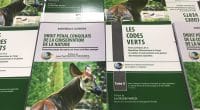In its 2024 Finance Act, Cameroon, one of the richest countries on the African continent in terms of natural potential, is framing the environmental sector through a robust environmental tax system. AFRIK 21 explains how it works.
Like most countries in the world, Cameroon adopts a finance law every year. For 2024, this 112-page document details the state budget, tax recommendations and regulatory prescriptions applied to key sectors of the national economy. The environment has not been forgotten, and is given pride of place. Cameroon’s parliament has approved a clear and precise set of taxes and fines for the protection of nature in this Central African country, which is increasingly faced with deforestation, poaching and all forms of pollution (noise, olfactory, etc.).
Companies and individuals will have to pay 500,000 and 300,000 CFA francs respectively (762 and 457 euros) respectively for a summary environmental and social impact assessment (EIES) and a 50,000 environmental impact statement (NIE). These assessments are essential, as they establish measures to counter or reduce the negative environmental effects of any major investment, as recommended by the framework law of August 5, 1996 on environmental management in Cameroon.
The finance law therefore sets these charges to draw the attention of project promoters, particularly those who still insist on building schools in swampy areas, noisy churches near hospitals, and industries next to housing. The texts are clear on this subject: “preventing a control, monitoring or inspection from being carried out” is considered an environmental offence. Any such offence in 2024 will incur a fine of between 5 and 30 million CFA francs (7,600 and 46,000 euros).
Environmental taxation to promote sustainability
The creation of unauthorized dumps (2 million CFA francs, or 3,000 euros), such as can be seen all over the capital Yaoundé, and the dumping of hydrocarbons in maritime areas (10 million CFA francs, or 15,000 euros), as is the case in the port city of Douala, are also punishable. And that’s not all. The Cameroonian government also wants to restore order in the highly touristic biodiversity sector. In this respect, it is planning to introduce tariffs on certain revenues from “wildlife and protected area services”.
Read also- CAMEROON: $183 million from the IMF to counter flooding, erosion and drought
By way of illustration, fees for visits to national parks with gorillas are 15,000 CFA francs (23 euros) for nationals, 50,000 CFA francs (76 euros) for foreign residents and up to 100,000 CFA francs (150 euros) for international tourists. This tougher stance has an ultimate price: to develop ecotourism and deter poachers. This legal arsenal should bring Cameroon up to date with the Sustainable Development Goals (SDGs) by 2030.
Benoit-Ivan Wansi







